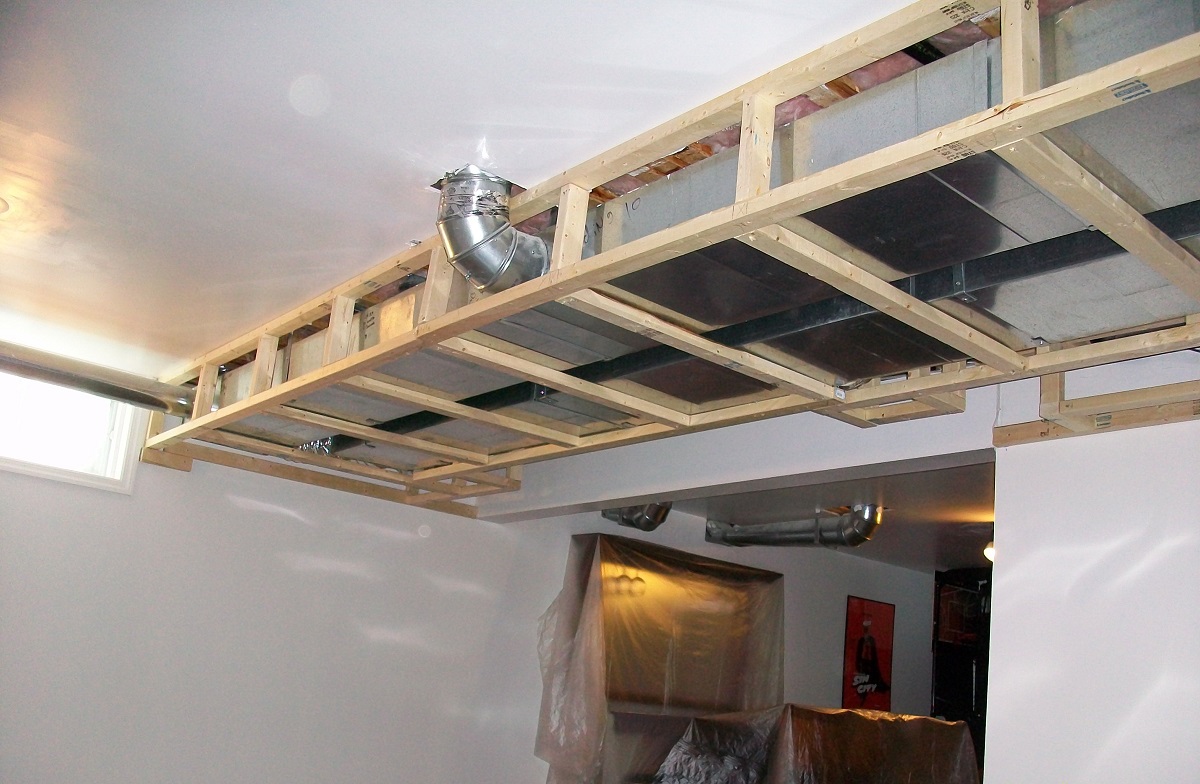

Articles
How To Hide Pipes In Basement
Modified: December 7, 2023
Learn how to hide pipes in your basement with these helpful articles. Find step-by-step guides, tips, and tricks for concealing unsightly plumbing and creating a cleaner, more organized space.
(Many of the links in this article redirect to a specific reviewed product. Your purchase of these products through affiliate links helps to generate commission for Storables.com, at no extra cost. Learn more)
Introduction
When it comes to designing and organizing your basement, one of the common challenges you may face is the unsightly appearance of exposed pipes. Whether you use your basement as a living space, storage area, or utility room, having visible pipes can be an eyesore and disrupt the overall aesthetics of the space.
Fortunately, there are various methods available to hide pipes in the basement and create a more visually appealing environment. In this article, we will explore different techniques and strategies to effectively conceal those unsightly pipes, without compromising their functionality or accessibility.
By hiding the pipes, you can transform your basement into a clean, organized, and visually appealing space that seamlessly integrates with the rest of your home. So let’s dive into the world of pipe concealment and discover the solutions that can help you achieve a polished and finished look for your basement.
Key Takeaways:
- Transform your basement into a visually appealing and organized space by effectively concealing unsightly pipes. From enclosures to creative design integration, there are versatile methods to achieve a polished and functional environment.
- Regular maintenance and inspections are crucial for ensuring the proper functioning and longevity of concealed pipes in your basement. Embrace creativity and infuse your personal style while transforming pipes into decorative elements.
Read more: How To Hide Plumbing Pipes
Understanding the Need to Hide Pipes in the Basement
Before we delve into the methods of concealing pipes in the basement, it is important to understand why you might want to do so. Exposed pipes in the basement can not only be visually unappealing but also create a cluttered and unfinished look.
Firstly, hiding the pipes can greatly enhance the overall aesthetics of your basement. By concealing them, you can create a more polished and professional look, making the space more inviting and enjoyable for both you and your guests. Whether you intend to use the basement as a living area, a home office, or a recreational space, having the pipes out of sight will contribute to a more visually appealing environment.
Besides visual appeal, concealing the pipes also helps in maintaining a sense of organization in the basement. Exposed pipes can make the space feel untidy and chaotic. Hiding them allows you to create a clean and well-arranged area, making it easier to navigate and utilize the basement for its intended purpose.
Furthermore, concealing the pipes can also have functional benefits. By protecting the pipes from accidental damage or direct contact with objects, you reduce the risk of leaks, corrosion, and other potential issues. Additionally, hiding the pipes can help in soundproofing the basement, preventing water noises, and reducing echo, providing a more peaceful and comfortable environment.
Overall, the need to hide pipes in the basement is driven by the desire for a visually appealing, organized, and functional space. By doing so, you can transform your basement into a cozy and inviting area that adds value to your home and enriches your lifestyle.
Assessing the Pipes in Your Basement
Before you embark on concealing the pipes in your basement, it is essential to assess the current condition and layout of the pipes. This evaluation will help you determine the most suitable hiding method and understand any potential challenges that may arise during the process.
Start by thoroughly examining the location and arrangement of the pipes in your basement. Note the areas where the pipes are most visible or protrude from the walls or ceiling. Take measurements and make a detailed sketch to keep track of the pipe layout.
Next, inspect the condition of the pipes. Look for any signs of wear, leaks, or corrosion. It’s important to address any plumbing issues before concealing the pipes to ensure their long-term functionality.
If you are unsure about the placement or purpose of certain pipes, consult a professional plumber or contractor to provide expert guidance and recommendations.
Another crucial aspect to consider is the accessibility of the pipes. If you need to regularly access certain pipes for maintenance or repairs, you will need to plan your concealment method accordingly. Consider using removable enclosures or covers that provide easy access while still maintaining a clean and concealed appearance.
Additionally, take note of any building code regulations or safety considerations relevant to pipe concealment in your area. It’s important to ensure that your hiding method complies with local regulations and does not compromise the safety or functionality of the pipes.
By thoroughly assessing the pipes in your basement, you can gather the necessary information to plan and execute an effective hiding strategy. Understanding the layout, condition, and accessibility of the pipes will help you make informed decisions and select the most suitable concealment methods for your specific needs.
Planning the Concealment Method
Once you have assessed the pipes in your basement, it’s time to plan the method of concealment. This involves considering various factors such as aesthetics, accessibility, budget, and personal preferences.
Start by determining the type of hiding method that best suits your requirements. There are several options available, including enclosures, wall or ceiling covers, pipe insulation techniques, and incorporating pipes into design elements.
Enclosures: Enclosures are a popular choice for hiding pipes in the basement. These can be custom-built or purchased pre-made. Enclosures provide a seamless and polished look, completely concealing the pipes while offering easy access for maintenance and repairs.
Wall or Ceiling Covers: Another common method is using covers to hide pipes. These covers can be mounted on the walls or ceiling, camouflaging the pipes while blending with the surrounding decor. They are available in a variety of styles and materials to suit your preferences.
Pipe Insulation Techniques: Pipe insulation not only serves the purpose of thermal protection but can also be used as a means of hiding the pipes. Insulated pipe covers are available in various sizes and can be easily installed over the exposed pipes, providing a uniform and finished appearance.
Incorporating Pipes into Design Elements: If you prefer a more unique and creative approach, you can incorporate the pipes into design elements of the basement. For example, using pipes as support for shelves or creating a decorative pipe railing can add an industrial and modern aesthetic while effectively hiding the pipes.
Consider your budget when deciding on the concealment method. Some options may be more cost-effective than others, so it’s important to evaluate your financial limitations and explore affordable alternatives.
Lastly, think about the overall aesthetics you want to achieve in your basement. Choose a concealment method that complements the style and design of your basement. Whether it’s a sleek and contemporary look or a rustic and industrial feel, aligning the hiding method with the overall theme will create a cohesive and visually appealing space.
By carefully planning the concealment method, taking into account factors such as aesthetics, accessibility, budget, and personal preferences, you can successfully hide the pipes in your basement while achieving the desired look and functionality.
Concealing Pipes with Enclosures
One of the most effective methods for hiding pipes in the basement is by using enclosures. Enclosures provide a streamlined and clean appearance while allowing easy access to the pipes when needed for maintenance or repairs.
There are two main options for concealing pipes with enclosures: custom-built enclosures and pre-made enclosures. Let’s explore each option in more detail:
Read more: How To Hide Pipes In Living Room
Custom-Built Enclosures
If you have specific requirements or a unique layout in your basement, custom-built enclosures may be the ideal solution. With custom-built enclosures, you can tailor the design, size, and materials to perfectly fit your basement’s aesthetics.
Start by measuring the dimensions of the pipes and planning the layout of the enclosure. Take into account any obstacles or constraints in the space. Then, decide on the materials you want to use, such as wood, PVC, or metal, depending on your personal preference and the overall style of your basement.
Once you have the measurements and materials ready, it’s time to build the enclosure. Follow the appropriate construction techniques and secure the enclosure to the wall or ceiling, ensuring it is sturdy and well-supported. Consider incorporating access panels or removable sections to ensure easy access for future maintenance or repairs.
Custom-built enclosures offer a tailored and seamless appearance in your basement while effectively hiding the pipes. They allow you to have full control over the design and materials, ensuring it blends harmoniously with the overall aesthetic of the space.
Pre-made Enclosures
If you prefer a quicker and more convenient solution, pre-made enclosures are readily available in the market. These enclosures come in various sizes and styles, allowing you to choose the one that best suits your needs.
Measure the dimensions of the pipes and select a pre-made enclosure that can accommodate them. Ensure it has removable panels or access points for easy maintenance. Follow the manufacturer’s instructions to install the enclosure securely to the wall or ceiling.
Pre-made enclosures offer a cost-effective and time-saving option for concealing pipes in the basement. They come in a range of designs and finishes, allowing you to find one that matches your preferred aesthetic.
Whether you opt for custom-built or pre-made enclosures, both methods provide an effective way to hide pipes in the basement. They not only improve the overall appearance of the space but also ensure easy accessibility for any future maintenance needs.
Using Wall or Ceiling Covers to Hide Pipes
Another popular method for hiding pipes in the basement is by using wall or ceiling covers. These covers act as a camouflage, blending the pipes seamlessly with the surrounding walls or ceilings, creating a clean and finished look.
Here are some options and techniques for using wall or ceiling covers to effectively conceal pipes:
1. Decorative Paneling or Beadboard
Decorative paneling or beadboard can be used to cover the walls and provide a stylish solution for hiding pipes. These panels are available in various materials, such as wood or PVC, and can be easily installed using nails or adhesive. Choose a style that complements the overall design of your basement for a cohesive look.
Read more: How To Hide Central Heating Pipes
2. Drywall Enclosures
An alternative to paneling is creating drywall enclosures to hide the pipes. This involves constructing a box-like structure around the pipes using drywall. Measure the dimensions of the pipes and plan the layout of the enclosure to ensure proper coverage. Cut and install the drywall, securing it to the surrounding walls or ceiling, and finish with joint compound and paint for a seamless appearance.
3. Suspended Ceiling Tiles
If the pipes run along the ceiling of your basement, suspended ceiling tiles can provide an effective hiding method. These tiles come in various styles and materials, offering a decorative solution while concealing the pipes. Install the tiles using a suspended grid system, ensuring that they align perfectly to cover the pipes.
4. Boxed-in Enclosures
For a more customized approach, consider building boxed-in enclosures around the pipes. This involves constructing a wooden or metal frame around the pipes and covering it with materials such as plywood or MDF. The boxes can be painted or finished to match the rest of the basement’s decor, ensuring a cohesive and concealed look.
Whichever method you choose, installing wall or ceiling covers is an effective way to hide pipes in the basement. It not only provides a neat and finished appearance but also allows for easy access to the pipes when necessary. Ensure the covers are securely installed and properly aligned to achieve a seamless and professional finish.
Utilizing Pipe Insulation Techniques for Disguise
If you’re looking for a cost-effective and easy-to-implement method to hide pipes in the basement, utilizing pipe insulation techniques can be an effective solution. Pipe insulation not only serves the purpose of thermal protection but can also be utilized to create a clean and uniform appearance for your pipes.
Here are some pipe insulation techniques you can use to effectively disguise the pipes in your basement:
Read more: How To Hide Furnace In Middle Of Basement
1. Foam Pipe Insulation
Foam pipe insulation is readily available in most home improvement stores and is an affordable option for concealing pipes. It comes in various sizes to fit different pipe diameters and can be easily installed by cutting it to the desired length and sliding it over the pipes.
To enhance the aesthetic appeal, consider using foam pipe insulation with a smooth and uniform finish. You can choose insulation with a neutral color or paint it to match the color of your basement walls.
2. Fabric Wrap
An alternative to foam insulation is fabric wrap. Fabric wraps are designed specifically for concealing pipes and are available in various patterns and colors. Measure the length of the pipes and wrap the fabric tightly around them, securing it with tape or adhesive. This method creates a decorative and visually appealing disguise for your pipes.
3. PVC Pipe Covers
PVC pipe covers are pre-made covers that can be easily slipped over the pipes, providing a clean and polished appearance. These covers come in different sizes and finishes, including white or metallic finishes, allowing you to choose the one that best matches your basement’s aesthetic.
4. Bamboo or Wicker Covers
If you prefer a more natural and rustic look, consider using bamboo or wicker covers to hide the pipes. These covers can be found in various sizes and styles and can be easily wrapped around the pipes to create a decorative and organic disguise.
When utilizing pipe insulation techniques for disguise, ensure that the insulation remains intact and does not obstruct access to the pipes for maintenance or repairs. Regularly inspect the insulation to check for any signs of wear or damage and replace it as needed.
By incorporating pipe insulation techniques into your basement, you can not only improve the appearance of the pipes but also add an extra layer of insulation, which can help reduce heat loss or gain and minimize condensation.
Remember to choose the insulation methods that best suit your aesthetic preferences and align with the overall design of your basement. By creatively utilizing pipe insulation techniques, you can effectively hide the pipes while adding a touch of style and functionality to your basement space.
Read more: How To Hide Pipes Under Floating Vanity
Incorporating Pipes into Basement Design Elements
Instead of trying to hide exposed pipes in your basement, you can embrace and incorporate them into the design elements of the space. This approach can create a unique and industrial aesthetic while effectively integrating the pipes into the overall theme of the basement.
Here are some ideas for incorporating pipes into your basement’s design:
1. Industrial Shelving
Use pipes as the support structure for shelves in your basement. This industrial shelving design can add a stylish and functional element to the space. Install sturdy brackets made from pipe fittings and attach wooden or metal planks to create the shelves. Arrange them creatively to display items or store belongings.
2. Pipe Railing
Create a distinctive railing for stairs or balustrades using pipes. This design is both functional and visually appealing, giving your basement an industrial and modern feel. Choose pipe fittings and lengths that match the dimensions and style of your staircase, ensuring a secure and safe installation.
3. Pendant Lighting
Take advantage of the pipes as a unique lighting feature in your basement. Use pipe fittings and fixtures to create pendant lights that hang from the ceiling. This design approach not only provides ample lighting but also adds an interesting and unconventional element to the space.
Read more: How To Hide HVAC Ducts In Basement
4. Artistic Display
Turn exposed pipes into a work of art by using them as a canvas for creative displays. For example, hang artwork, photographs, or other decorative items from the pipes using hooks or clips. This approach allows you to transform the pipes into an eye-catching focal point while adding a personal touch to the basement’s decor.
When incorporating pipes into the design elements of your basement, pay attention to safety and stability. Ensure that the pipes are securely attached and can bear the weight of any objects or fixtures. Regularly inspect the fittings and connections to prevent any accidents or damage.
Embracing the exposed pipes in your basement and incorporating them into the design creates a unique and industrial aesthetic. It can transform the pipes from unsightly features to creative and functional design elements, adding character and charm to your basement space.
Painting or Camouflaging Pipes for Concealment
If you want a simple and affordable way to hide pipes in your basement, painting or camouflaging them can be a great option. By utilizing the right techniques and materials, you can seamlessly blend the pipes into the surrounding walls or ceiling, effectively concealing them while still maintaining their functionality.
Here are some methods for painting or camouflaging pipes for concealment:
1. Matching the Color of the Surrounding Surfaces
A straightforward approach is to paint the exposed pipes with the same color as the surrounding surfaces. For example, if the basement walls are painted white, use white paint to cover the pipes. This technique helps the pipes blend into the background, making them less noticeable.
Choose a paint that is suitable for pipes, such as a latex-based or oil-based paint, depending on the type of pipes you have. Ensure that the pipes are clean and dry before applying the paint, and use a brush or roller to achieve an even and smooth finish.
2. Creating Faux Finishes
Another option is to create faux finishes on the pipes to mimic other materials or textures. For instance, you can use techniques like sponge painting or rag rolling to give the pipes a weathered or stone-like appearance. This method can be especially effective if you want to incorporate an industrial or rustic vibe to your basement design.
Experiment with different paint colors and techniques to achieve the desired effect. Don’t be afraid to get creative and try out various finishes that blend harmoniously with the overall aesthetic of your basement.
Read more: How To Hide Sump Pump In Basement
3. Camouflaging with Decorative Coverings
If you prefer a non-permanent solution, consider using decorative coverings to camouflage the pipes. These coverings can come in the form of adhesive films, fabric wraps, or even wallpaper specifically designed for pipe concealment.
Choose coverings that match the style and color scheme of your basement. Whether it’s a patterned design, a textured wrap, or a realistic print, these coverings can effectively hide the pipes while adding a decorative touch to your space.
Before applying any paint or coverings, ensure that the pipes are clean and free from any debris or grease. Properly prepare and prime the surface to ensure optimal adhesion and longevity of the finish.
By painting or camouflaging pipes for concealment, you can achieve a seamless integration into your basement’s design. This method provides an affordable and versatile way to hide pipes without the need for extensive construction or modifications.
Regular Maintenance and Inspection Tips
While concealing pipes in your basement can greatly improve the overall aesthetics of the space, it’s important to remember that regular maintenance and inspections are still necessary to ensure their proper functioning. Here are some tips to help you maintain and inspect the pipes in your basement:
1. Schedule Routine Inspections
Make it a habit to conduct regular inspections of the pipes in your basement. Look for any signs of leaks, corrosion, or damage. Inspect pipe joints, connections, and valves for any looseness or wear. By identifying potential issues early on, you can address them before they lead to more extensive damage.
2. Check for Moisture or Condensation
Moisture or condensation on the pipes can be a sign of leaks or insulation problems. Regularly check the pipes for any visible signs of moisture and address the issue promptly. Adequate insulation can help prevent condensation, so ensure that the insulation is properly installed and in good condition.
Read more: How To Hide Water Meter In Basement
3. Clean the Pipes Regularly
Clean the visible portions of the pipes regularly to remove dust, dirt, or any buildup. Use a damp cloth or a mild detergent solution to gently wipe down the pipes. This not only helps in maintaining their appearance but also allows you to identify any potential issues during the cleaning process.
4. Insulate Exposed Pipes
Consider insulating any exposed pipes that you are unable to conceal. Insulation helps in preventing heat loss or gain and protects the pipes from freezing during cold weather. Use insulation materials specifically designed for pipes and ensure they are properly sealed and fitted.
5. Address Plumbing Issues Promptly
If you notice any plumbing issues such as leaks, unusual noises, or changes in water pressure, address them promptly. Ignoring plumbing problems can lead to further damage to the pipes and potentially impact the overall functionality of your basement.
6. Consult a Professional Plumber
If you are unsure about any aspect of the maintenance or inspection process, it’s always a good idea to consult a professional plumber. They have the expertise to assess the condition of your pipes, offer recommendations, and perform any necessary repairs or maintenance.
By following these regular maintenance and inspection tips, you can ensure the proper functioning and longevity of the pipes in your basement. Regular checks and proactive measures can help prevent potential issues, saving you from costly repairs and ensuring a hassle-free experience in your basement space.
Read more: How To Fix Leaky Pipe In Basement
Conclusion
Concealing pipes in the basement is essential for creating a visually appealing and organized space. From assessing the pipes to planning the concealment method, there are various strategies you can employ to achieve this goal. Whether you choose to use enclosures, wall or ceiling covers, pipe insulation techniques, or incorporate the pipes into design elements, each method offers its own advantages and can be tailored to your specific needs and preferences.
It’s important to remember that regular maintenance and inspections are crucial to ensure the proper functioning of the pipes. By conducting routine checks, addressing plumbing issues promptly, and keeping the pipes clean and insulated, you can prolong their lifespan and prevent any potential problems from escalating.
When working on concealing the pipes, it’s encouraged to get creative and infuse your own personal style into the design. Embrace the opportunity to transform the pipes into decorative elements or integrate them harmoniously into the overall aesthetic of your basement.
In conclusion, by understanding the need to hide pipes, assessing their condition, planning the concealment method, and implementing effective techniques, you can successfully hide unsightly pipes in your basement. This will not only create a more visually appealing space but also contribute to a clean and organized environment that enhances the overall functionality of your home.
So roll up your sleeves, get creative, and turn your basement into a space that you can truly be proud of, free from the distraction of exposed pipes.
Frequently Asked Questions about How To Hide Pipes In Basement
Was this page helpful?
At Storables.com, we guarantee accurate and reliable information. Our content, validated by Expert Board Contributors, is crafted following stringent Editorial Policies. We're committed to providing you with well-researched, expert-backed insights for all your informational needs.
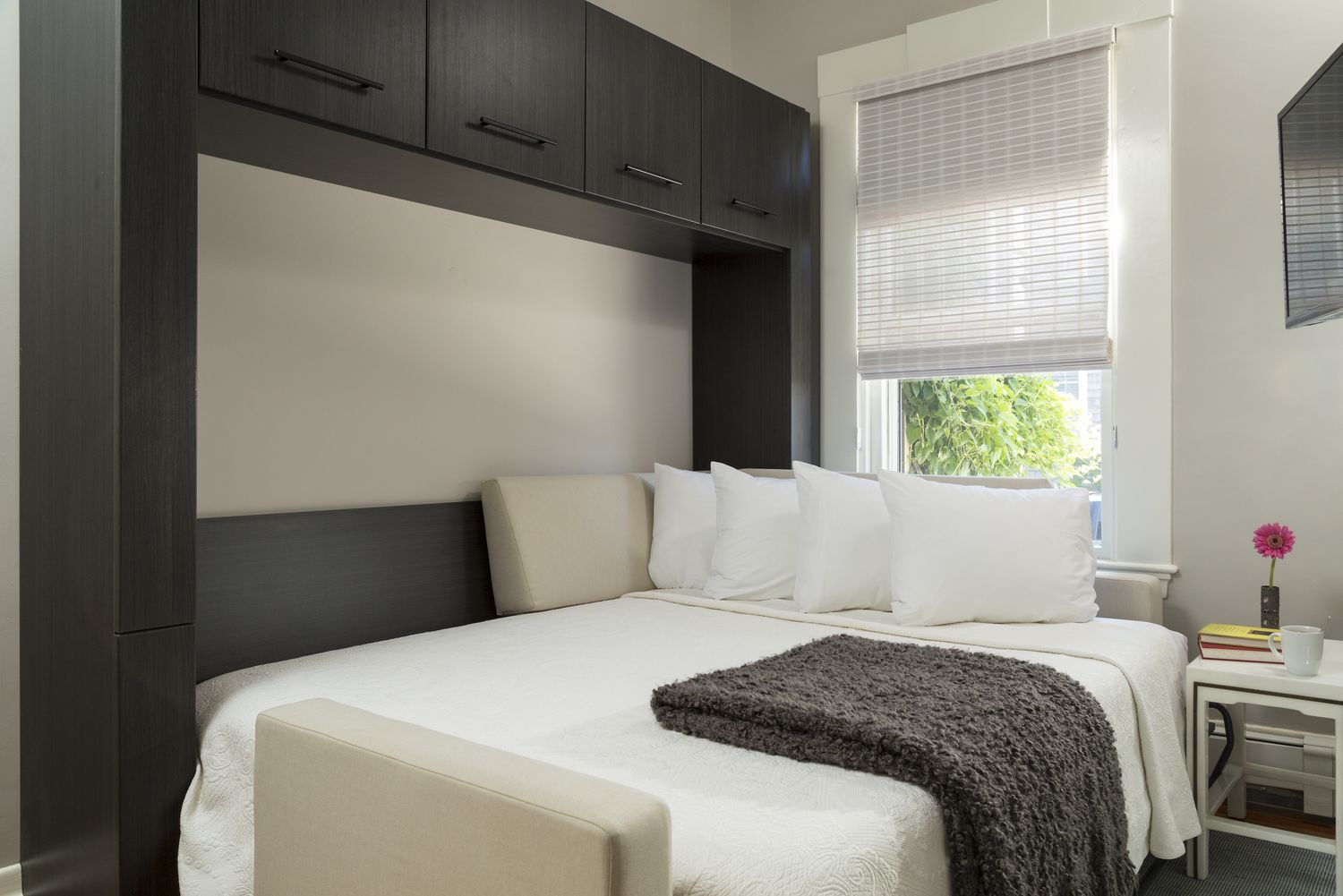
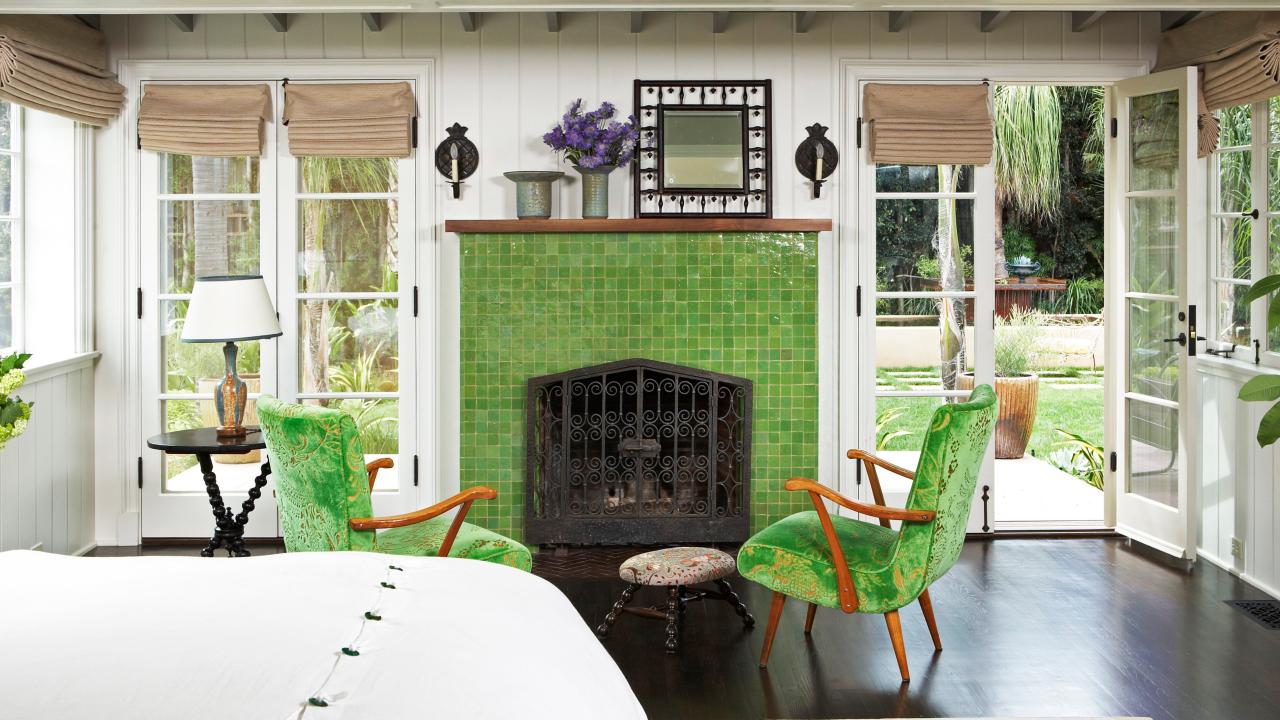
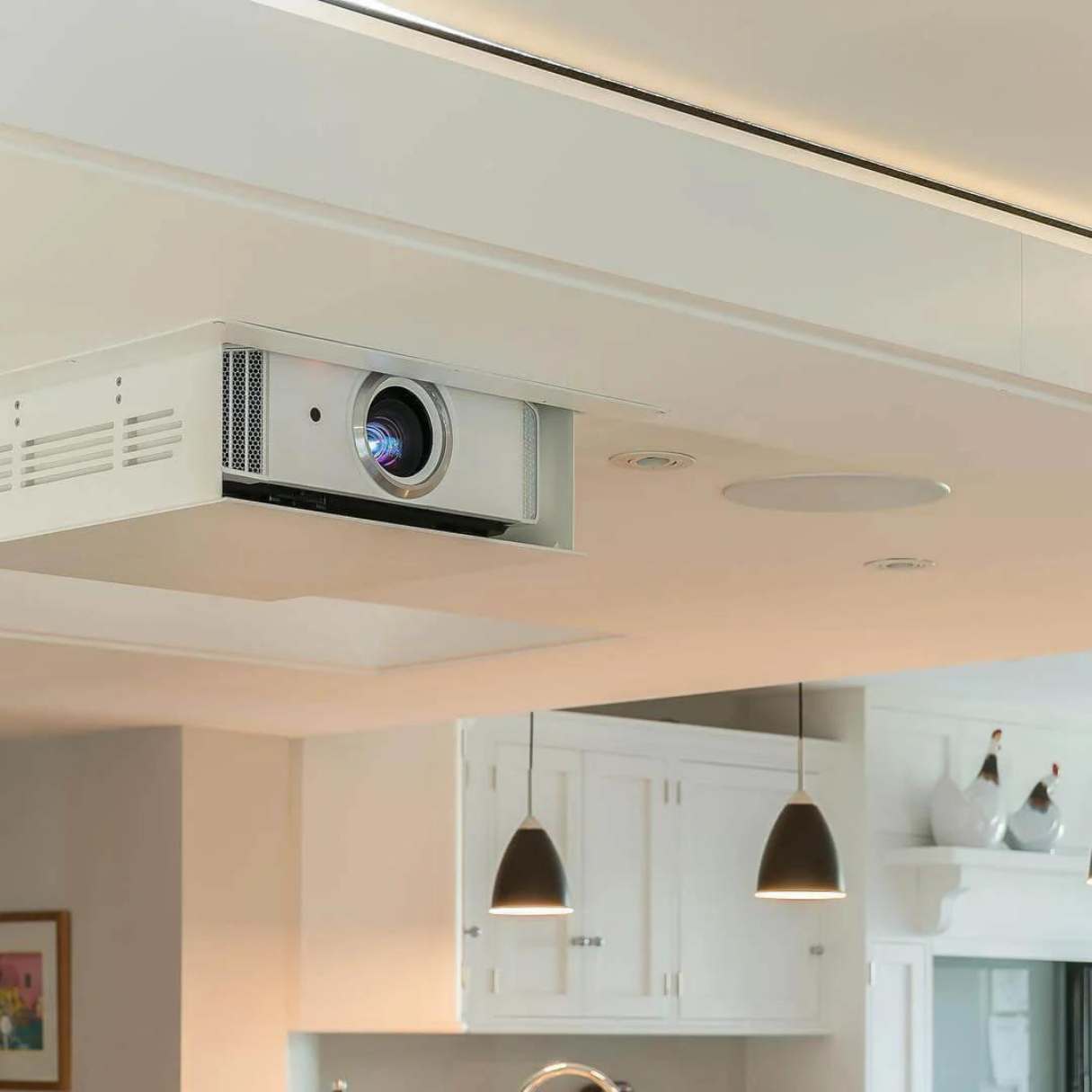
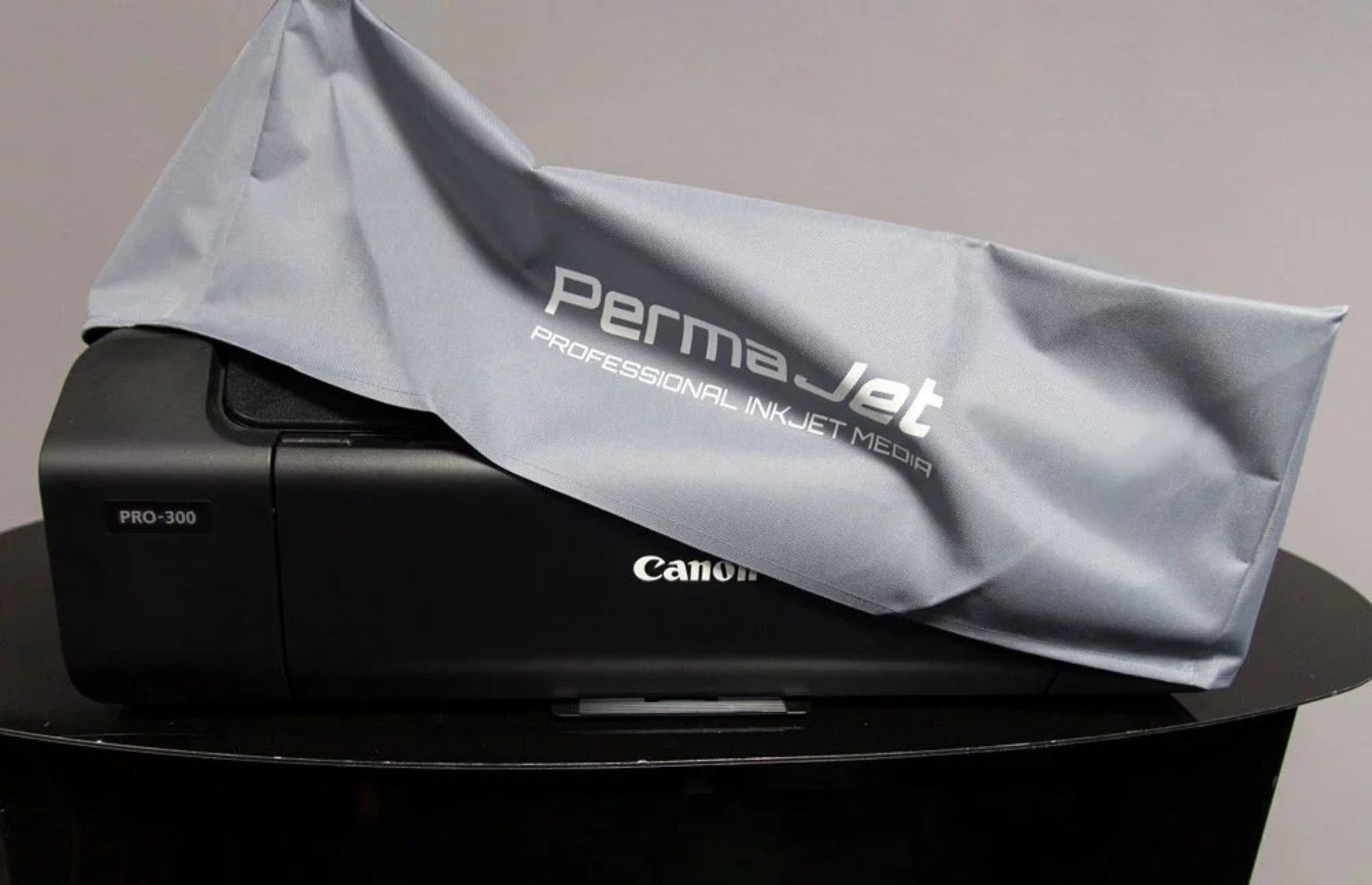
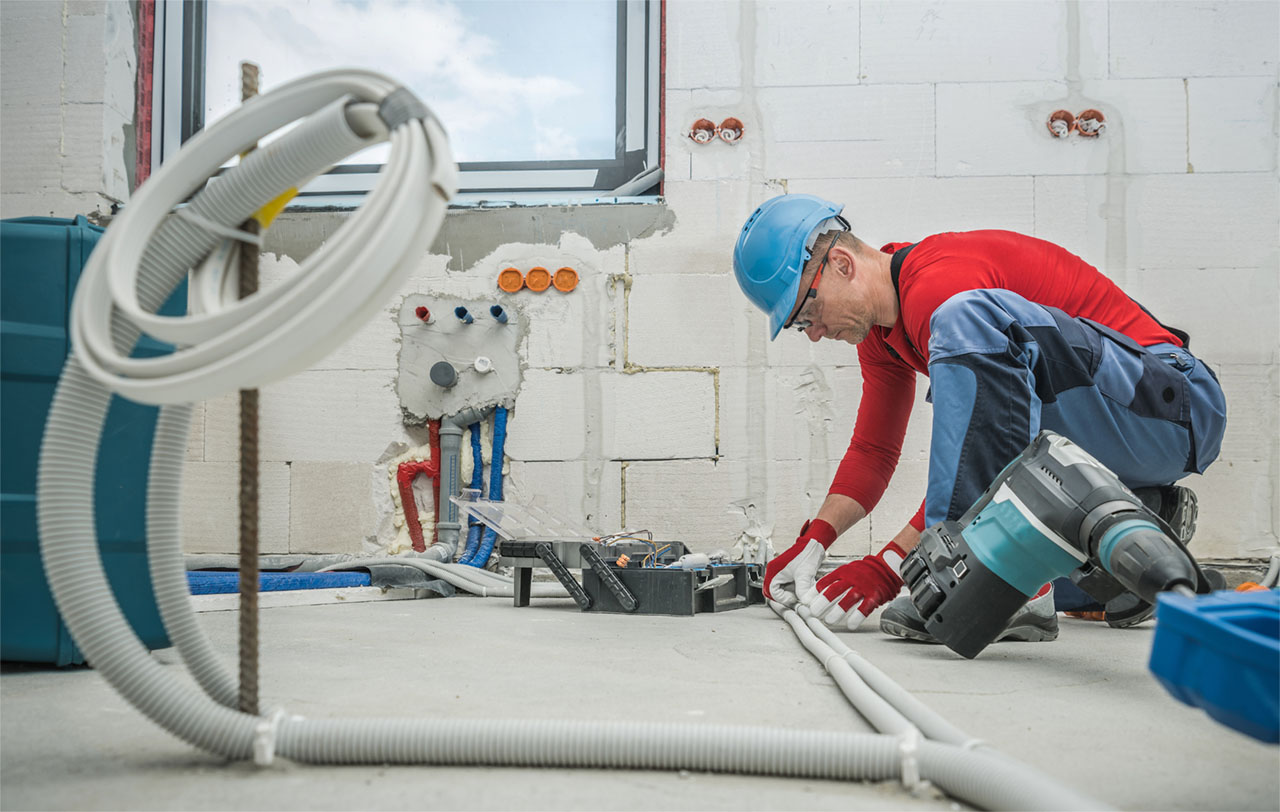
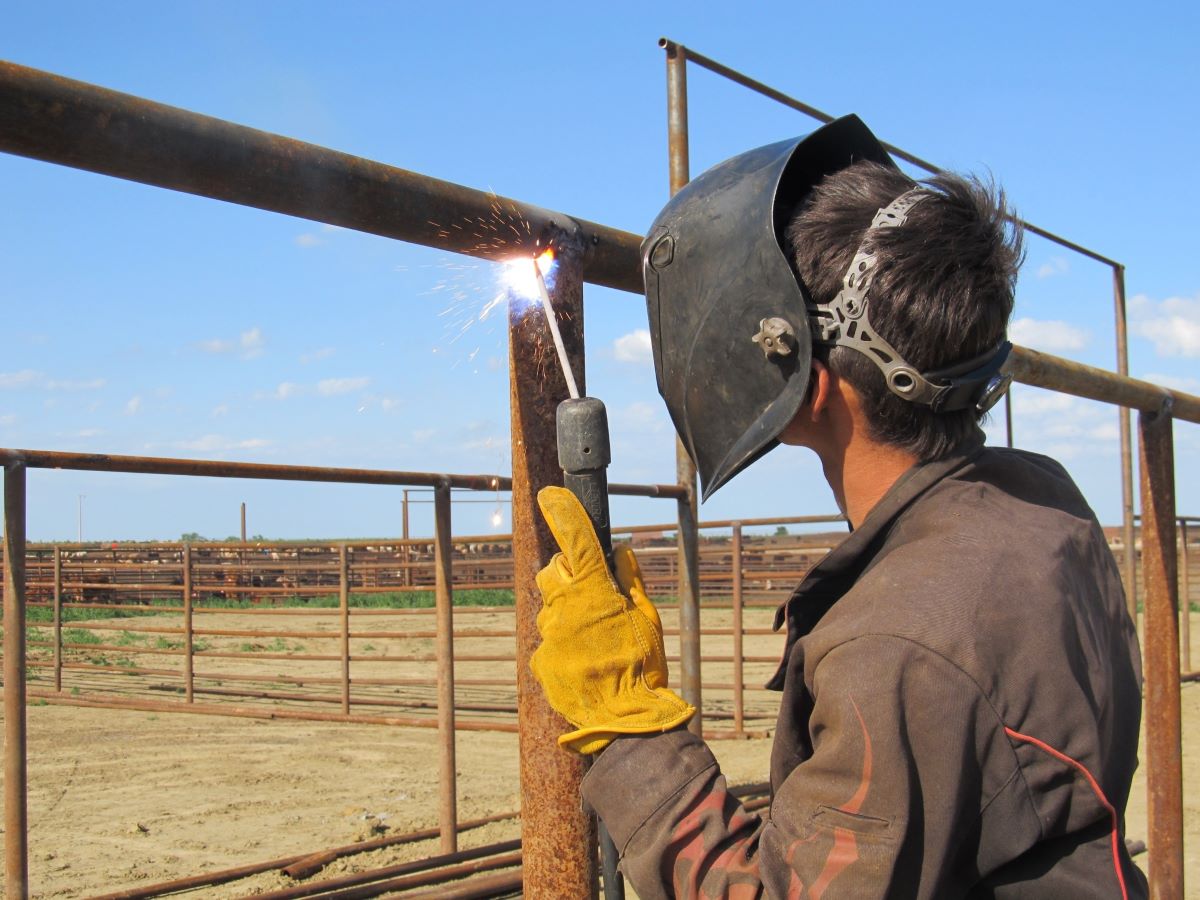
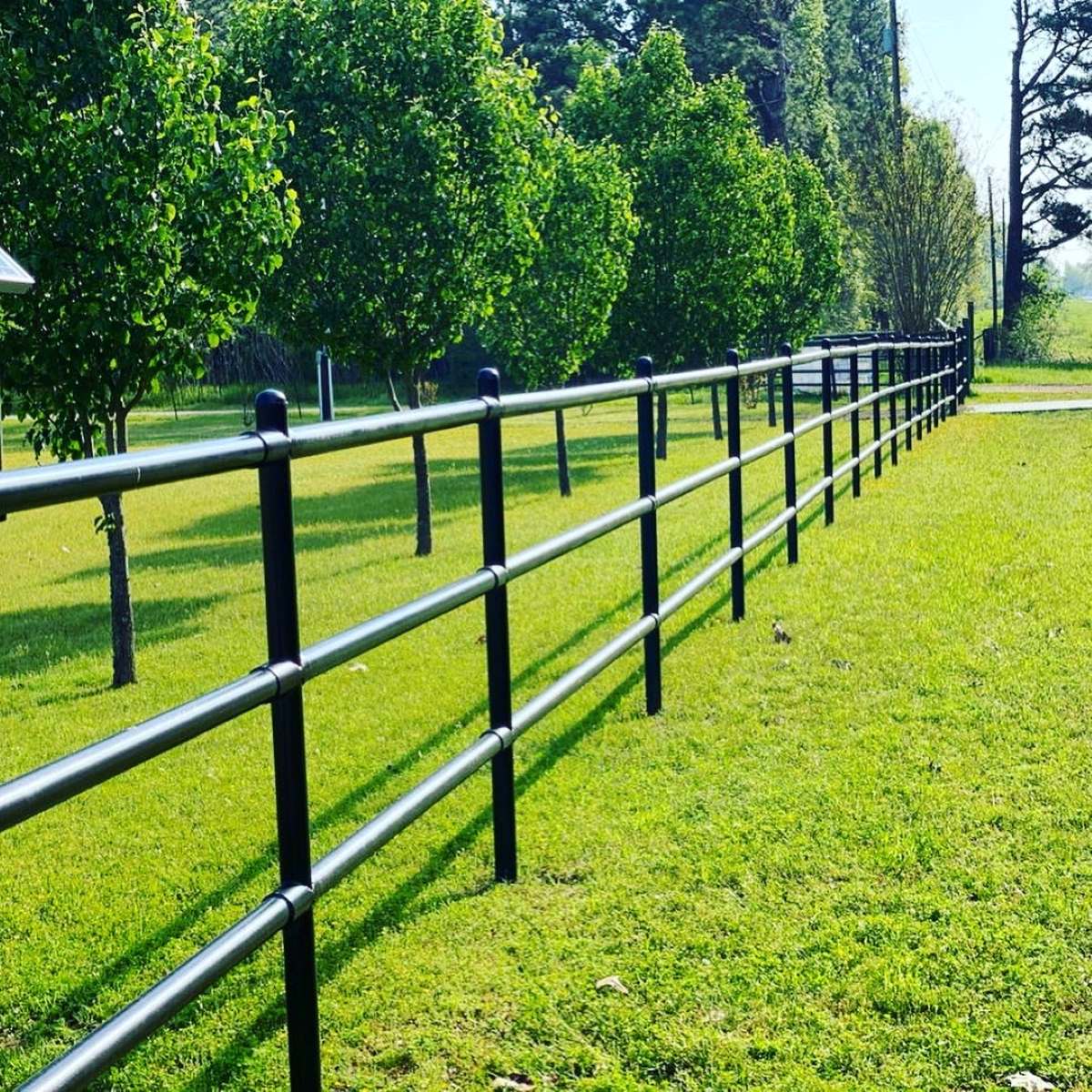

0 thoughts on “How To Hide Pipes In Basement”